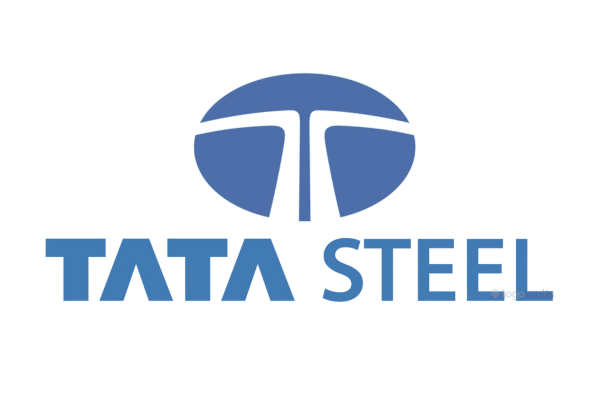In this blog post, we explore the Tata Steel Business Model to explain and understand how the Business Model of Tata Steel is structured and to learn about how Tata Steel makes money.
Tata Steel, one of the world’s leading steel producers, has a rich history and a powerful presence in the global steel market. As an entrepreneurship professor at Harvard Business School, I find the story of Tata Steel and its business model both fascinating and insightful for aspiring entrepreneurs. In this article, we will delve into the inner workings of Tata Steel’s business model, using Alexander Osterwalder’s Business Model Canvas as a framework to better understand the company’s key components and strategies.
Tata Steel: The Origins
Tata Steel was founded by Jamsetji Tata, a pioneering Indian industrialist, in 1907. Jamsetji Tata was a visionary who believed in the transformative power of industry for the growth and development of India. He started his career in the textile industry and later expanded his business interests to include steel, hydroelectric power, and hospitality.
Jamsetji’s vision for a steel company was fueled by his belief that steel would play a vital role in the infrastructure development of India. He began working on his dream of establishing a steel plant in the late 19th century, but unfortunately passed away before he could see his vision come to life. His son, Dorabji Tata, took on the mantle and continued working towards realizing his father’s dream. In 1907, Tata Iron and Steel Company (TISCO) was established, later renamed Tata Steel.
The Business Model Canvas of Tata Steel
The Business Model Canvas, developed by Alexander Osterwalder, is a strategic management tool that helps organizations visualize, describe, and understand their business model. The canvas consists of nine building blocks, each representing a key component of a business model. These building blocks are:
- Customer Segments
- Value Proposition
- Channels
- Customer Relationships
- Revenue Streams
- Key Resources
- Key Activities
- Key Partnerships
- Cost Structure
Using the Business Model Canvas, we will now explore Tata Steel’s business model in-depth.
- Customer Segments
Tata Steel’s customers primarily consist of companies in various industries that use steel as a raw material for manufacturing. Their key customer segments are:
- Construction and Infrastructure: Tata Steel’s products are widely used in the construction of residential and commercial buildings, bridges, airports, and other infrastructure projects.
- Automotive: The company supplies high-quality steel products to automotive manufacturers for producing cars, trucks, and other vehicles.
- Consumer Goods: Tata Steel’s steel is used in the manufacturing of home appliances, packaging materials, and other consumer products.
- Energy: The company caters to the oil and gas, power generation, and renewable energy sectors, providing steel solutions for pipelines, wind turbine towers, and other energy-related infrastructure.
- Industrial and Engineering: Tata Steel serves various industries, including shipbuilding, defense, heavy engineering, and capital goods manufacturing.
- Value Proposition
Tata Steel’s value proposition revolves around the following key elements:
- Quality: Tata Steel is committed to producing high-quality steel products that meet or exceed industry standards and customer requirements.
- Innovation: The company continually invests in research and development to develop new, advanced steel products and solutions that cater to the evolving needs of its customers.
- Sustainability: Tata Steel is focused on reducing its environmental footprint, through energy-efficient processes, waste reduction, and the development of eco-friendly products.
- Customization: Tata Steel offers customized steel solutions tailored to meet the specific requirements of its customers in various industries.
- Reliability: The company has established a reputation for consistently delivering products on time and maintaining long-term relationships with its customers.
- Channels
Tata Steel uses a combination of direct and indirect channels to distribute its products to customers.
These channels include:
- Direct Sales: The company has a dedicated sales force that directly engages with customers, providing them with product information, technical support, and other services.
- Distributors and Dealers: Tata Steel works with a network of distributors and dealers who help them reach customers in various regions and industries. This ensures that the company’s products are readily available in the market.
- E-commerce: Tata Steel has embraced digitalization and offers its products through online platforms, making it easy for customers to access product information and place orders.
- Export: The company exports its products to more than 50 countries, leveraging its global presence and expanding its customer base.
- Customer Relationships
Tata Steel places a strong emphasis on building and maintaining long-term relationships with its customers. To achieve this, the company focuses on the following aspects:
- Technical Support: Tata Steel provides expert technical support to its customers, helping them select the right products and offering guidance on product usage and application.
- Training and Education: The company conducts regular training sessions, workshops, and seminars for customers, keeping them informed about the latest industry trends and best practices.
- Customer Service: Tata Steel has a dedicated customer service team that addresses customer queries and complaints promptly, ensuring that customers have a positive experience throughout their interactions with the company.
- Feedback and Communication: The company encourages customers to provide feedback on its products and services, using this information to make improvements and enhance customer satisfaction.
- Revenue Streams
Tata Steel’s primary revenue streams are generated through the sale of steel products to its customers across various industries. The company also derives revenue from the following sources:
- Value-added Services: Tata Steel offers various services, such as processing, coating, and consulting, which generate additional revenue.
- Intellectual Property: The company’s investments in research and development lead to the creation of patented technologies and innovations, which can be licensed to other companies, generating royalty income.
- Export: As mentioned earlier, Tata Steel exports its products to more than 50 countries, contributing to its overall revenue.
- Key Resources
Tata Steel’s key resources are the assets and capabilities that enable the company to create and deliver value to its customers. These include:
- Raw Materials: The company’s primary raw materials are iron ore, coal, and limestone, which are essential for steel production.
- Manufacturing Facilities: Tata Steel operates multiple manufacturing facilities across the globe, enabling it to produce a wide range of steel products.
- Research and Development: The company has dedicated R&D facilities and collaborates with research institutions to develop new technologies and innovative products.
- Skilled Workforce: Tata Steel’s workforce consists of skilled professionals with expertise in various aspects of steel production, sales, and customer support.
- Brand: The Tata brand is a valuable asset, symbolizing trust, quality, and innovation.
- Key Activities
Tata Steel’s key activities are the critical tasks and processes that the company must undertake to deliver value to its customers. These include:
- Steel Production: The company’s core activity is the production of high-quality steel products using raw materials and advanced manufacturing processes.
- Research and Development: Tata Steel invests in R&D to develop new products, improve manufacturing processes, and enhance sustainability.
- Marketing and Sales: The company engages in marketing and sales efforts to promote its products, reach customers, and generate revenue.
- Supply Chain Management: Tata Steel manages an extensive supply chain, ensuring the availability of raw materials, optimizing production processes, and delivering products to customers on time.
- Key Partnerships
Tata Steel has established strategic partnerships with various stakeholders to support its business model. Some of these key partnerships include:
- Suppliers: The company works closely with suppliers of raw materials, machinery, and other inputs, ensuring that it has access to the resources required for steel production
- Research Institutions: Tata Steel collaborates with research institutions and universities to access cutting-edge research and expertise, enabling the development of innovative products and technologies.
- Industry Associations: The company is a member of various industry associations, which helps it stay informed about industry trends, regulations, and best practices. These associations also provide platforms for networking and collaboration with other industry players.
- Government Bodies: Tata Steel works with local, national, and international government agencies to ensure compliance with regulations, secure permits, and participate in policy-making processes that impact the steel industry.
- Joint Ventures: The company engages in joint ventures and strategic alliances with other companies to expand its market presence, access new technologies, and share resources and expertise.
- Cost Structure
Tata Steel’s cost structure is driven by the following key cost elements:
- Raw Materials: The procurement of raw materials, such as iron ore, coal, and limestone, represents a significant portion of the company’s production costs.
- Manufacturing Costs: These costs include the expenses associated with operating and maintaining manufacturing facilities, such as energy, labor, and equipment maintenance costs.
- Research and Development: Tata Steel invests in R&D to develop new products and technologies, which requires funding for research facilities, personnel, and equipment.
- Marketing and Sales: The company incurs costs related to marketing and sales efforts, including advertising, promotions, and sales personnel salaries.
- Logistics and Distribution: Tata Steel’s distribution network requires investment in transportation, warehousing, and other logistics-related expenses.
Tata Steel’s journey from a visionary entrepreneur’s dream to a global steel giant is a testament to the power of perseverance, innovation, and strategic thinking. By analyzing the company’s business model using Alexander Osterwalder’s Business Model Canvas, we gain valuable insights into the key components and strategies that have contributed to its success.
Tata Steel’s commitment to quality, innovation, sustainability, and customer relationships has enabled it to create a strong value proposition and establish a leading position in the global steel market. The company’s strategic approach to channel management, revenue generation, resource allocation, and partnerships has further strengthened its business model.
For aspiring entrepreneurs, Tata Steel’s story serves as an inspiration and offers valuable lessons on the importance of having a clear vision, adapting to changing market conditions, and continuously innovating to stay ahead of the competition. By understanding and applying the principles of the Business Model Canvas, entrepreneurs can develop and refine their own business models, paving the way for sustainable growth and long-term success.
Did you know? Corporate teams like to use our co work space in Bangalore.
Learn more about our coworking space on our YouTube channel Work Theater Studios where we talk about a variety of topics including personal finance, entrepreneurship, business and life.
Did you know? We also have a private theatre in Bangalore.



